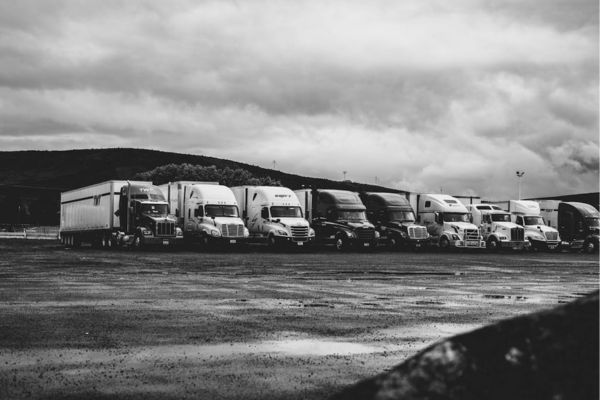The commercialization of Autonomous driving technology in the trucking industry has rapidly advanced in 2024, presenting substantial potential to address critical industry challenges such as high operational costs, driver shortages, and safety concerns. It is expected that the global trucking fleet will be supported by an additional half million L4 autonomous drivers, while the remaining drivers will either transition into supervisory roles or continue to operate in less developed regions.
IDTechEx’s recent research on over ten companies in the autonomous trucking sector reveals that the industry has officially entered the commercialization phase, marked by deep collaborations across the global supply chain. Observing the market, it is evident that active startups are universally building their software or retrofitting technology on truck chassis provided by Original Equipment Manufacturers (OEMs). This approach not only alleviates the pressures associated with mass production but also allows these startups to leverage OEM technical support. The industry is thus evolving into a combined business model comprising OEMs, downstream logistics companies, and autonomous driving firms.
Global Policy Landscape for Autonomous Trucking
Leading autonomous trucking companies of 2024. Source: IDTechEx.
The global commercialization of autonomous trucks in 2024 is being shaped significantly by regional regulations and government policies. Countries with advanced testing and regulatory frameworks are leading the way in fostering innovation and deployment, while others are working to catch up. Key markets like the U.S., Europe, and China have adopted different approaches to enabling the growth of autonomous trucking, primarily influenced by their respective regulatory environments, infrastructure development, and governmental support.
United States
The U.S. remains one of the most prominent players in autonomous trucking development. The Federal Motor Carrier Safety Administration (FMCSA) and the National Highway Traffic Safety Administration (NHTSA) have spearheaded regulatory initiatives aimed at promoting the safe and scalable deployment of autonomous trucks. Currently, the regulatory framework allows for extensive pilot programs, with states such as California, Texas, and Arizona leading in on-road testing. However, the absence of a unified federal policy has led to a patchwork of state-level regulations. This fragmented legal landscape complicates cross-state operations, which are crucial for interstate freight transportation. As a result, autonomous truck developers are advocating for more harmonized national legislation that can streamline testing and commercialization efforts.
The recent bipartisan Infrastructure Investment and Jobs Act has also laid down provisions to improve the digital and physical infrastructure for autonomous vehicle deployment, including investments in smart highways and dedicated testing facilities. However, operational hurdles remain, particularly in the realm of safety standards, liability concerns, and public perception, which continue to shape regulatory efforts across the U.S.
Europe
Europe is emerging as a critical region for the development of autonomous trucking due to its robust regulatory support. The European Commission has introduced several policy initiatives under the “Europe on the Move” agenda, aiming to create a single European framework for autonomous vehicles. Countries such as Sweden, Germany, and the Netherlands are pioneers in autonomous trucking testing and deployment. Sweden’s Einride, for instance, is already conducting commercial operations with fixed-route L4 autonomous trucks across several European countries. In Germany, the landmark law on autonomous driving passed in 2021 allows for Level 4 operations in specific areas without the need for human intervention, setting a precedent for other European nations.
The European Union’s focus on environmental sustainability is also pushing the adoption of autonomous electric trucks as part of broader efforts to reduce carbon emissions from the transportation sector. However, different regulatory timelines and certification standards across member states still pose challenges for seamless cross-border autonomous operations. The European Commission is actively working on harmonizing these regulations to enable smoother integration of autonomous trucking across the continent.
China
China has emerged as a global leader in the commercialization of autonomous trucks, bolstered by strong government support and a well-developed regulatory framework. The Chinese government has implemented national guidelines that provide clear standards for testing, production, and commercial deployment of autonomous vehicles. Cities such as Beijing, Shanghai, and Shenzhen have established extensive autonomous vehicle test zones, and companies like Inceptio and DeepWay are benefiting from favorable policies, including pilot licenses for highway operations and subsidies for electric vehicle production.
China’s approach has been to tightly integrate the development of autonomous trucks with its broader goals of becoming a leader in electric vehicles and smart logistics. The government has also invested heavily in building smart infrastructure, such as connected highways and dedicated charging stations for electric trucks, further accelerating the deployment of autonomous trucking solutions. In addition, China’s centralized regulatory system allows for quicker implementation of policies compared to more fragmented systems like in the U.S. or Europe.
The IDTechEx report, “Autonomous Trucks 2024-2044: Technologies, Trends, Forecasts,” provides detailed insights into the market share and growth prospects of key regions, including China, the U.S., and Europe. In addition to routes to commercial L4 deliveries, the report also includes assessments of technical maturity, value chain positioning, business models, and practical calculations to determine the Total Cost of Ownership (TCO) for different levels of autonomous systems (L0, L2, L3, L4) across various markets.













